26+ Sample Corporate Resolution Forms
-
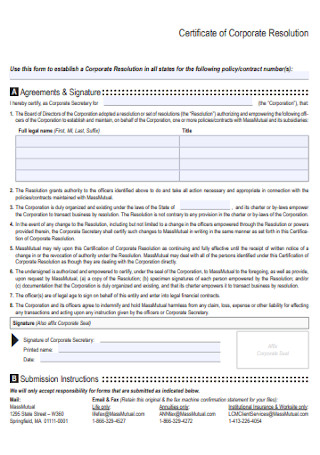
tificate of Corporate Resolution Form
download now -
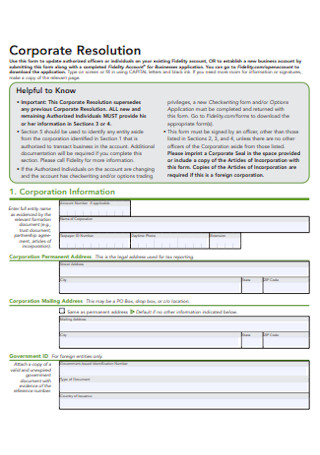
Sample Corporate Resolution Form
download now -
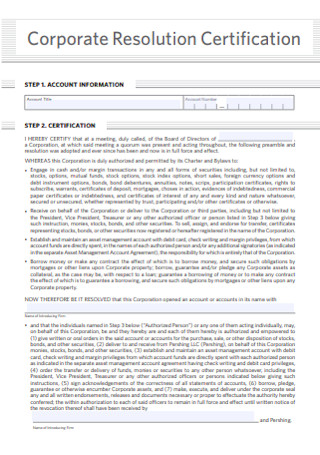
Corporate Resolution Certification Form
download now -
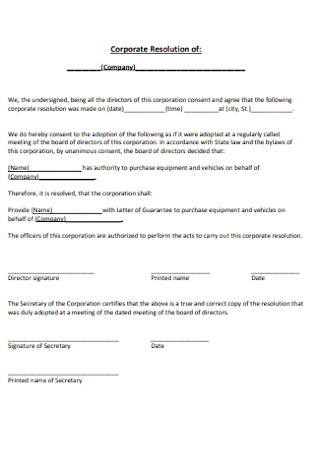
Company Corporate Resolution Form
download now -

Corporate Investment Resolution Form
download now -
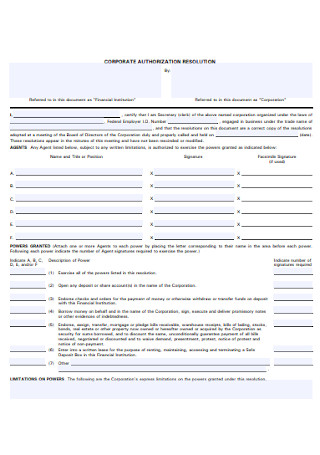
Corporate Authorization Resolution Form
download now -
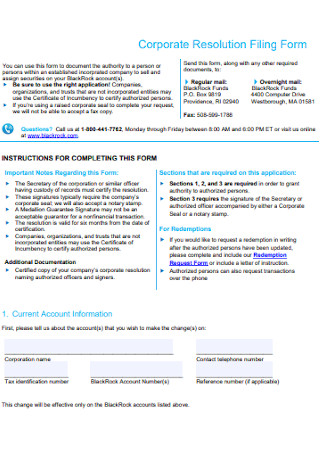
Corporate Resolution Filing Form
download now -
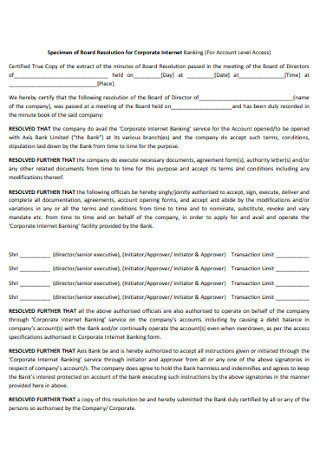
Resolution for Corporate Internet Form
download now -
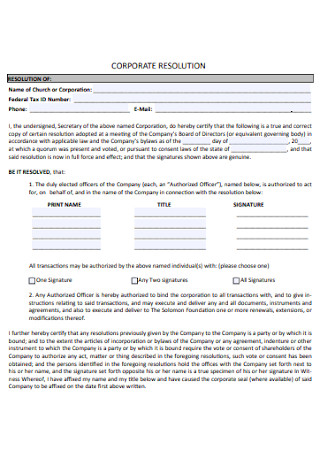
Corporation Foundation Resolution Form
download now -
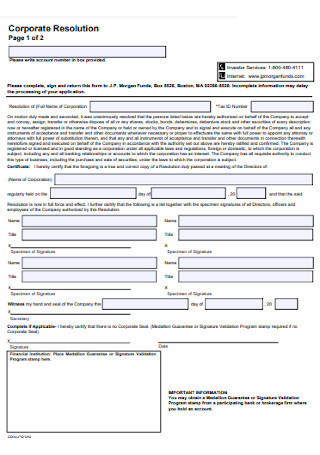
Corporate Management Resolution Form
download now -

Basic Corporation Resolution Form
download now -

Standard Corporation Resolution Form
download now -

Corporation Trust Resolution Form
download now -
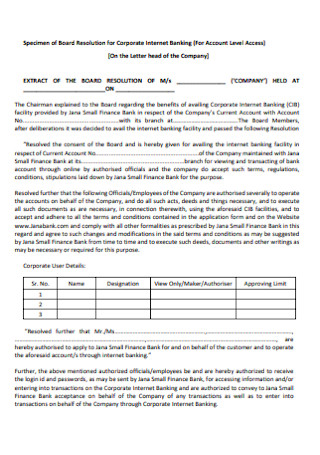
Resolution for Corporate Internet Banking Form
download now -
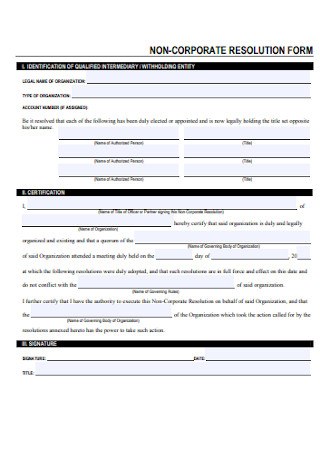
Non-Corporation Resloution Form
download now -
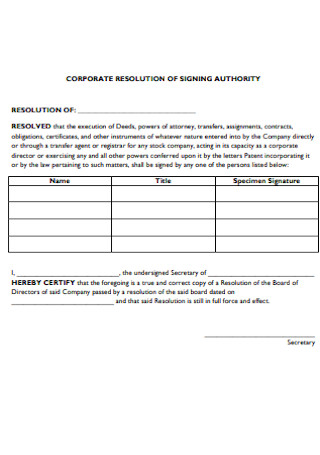
Corporation Resolution of Singing Form
download now -
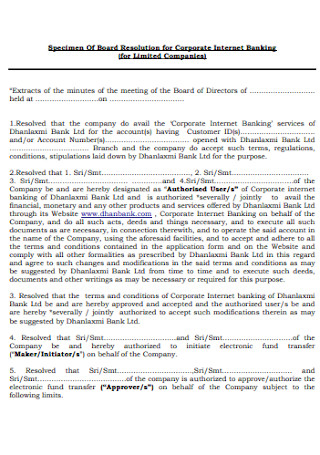
Resolution for Corporate Banking Form
download now -
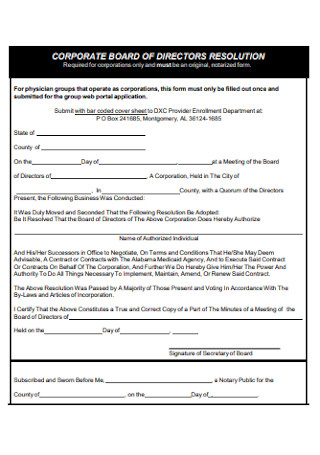
Corporate of Directors Resolution Form
download now -
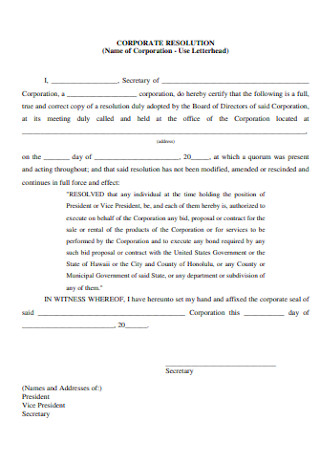
Corporation Resolution Letterhead Form
download now -
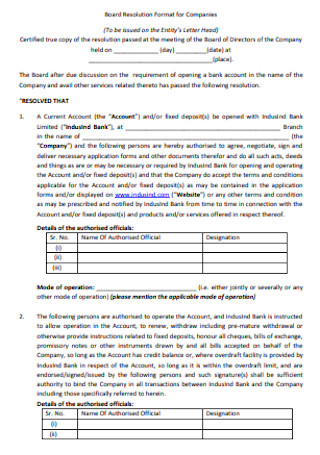
Board Resolution Format for Companies
download now -
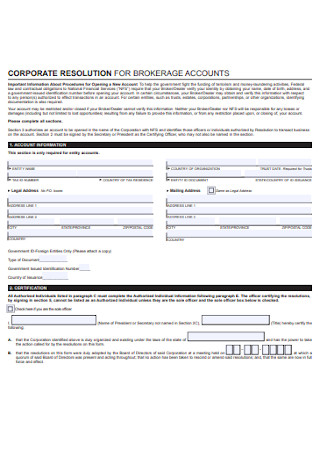
Corporation Resolution for Brokerage Account Form
download now -

Uniform Form for Corporation Resolution
download now -

Corporate Resolution For Sale Of Stock Form
download now -
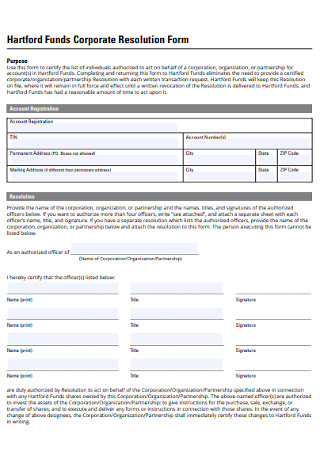
Funds Corporate Resolution Form
download now -
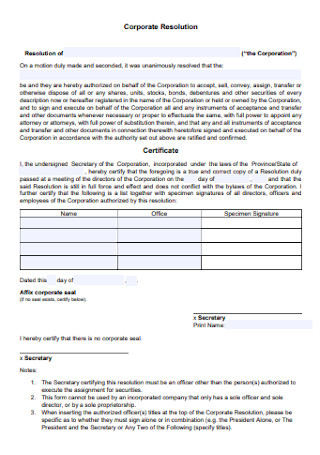
Corporate Resolution Clear Form
download now -
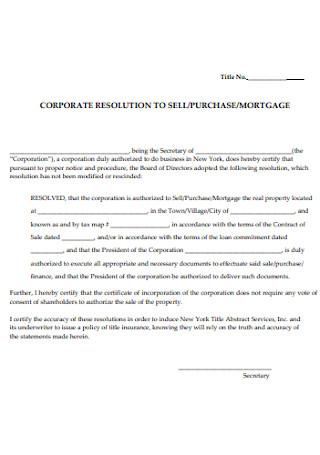
Corporate Resolution to Sell Form
download now -
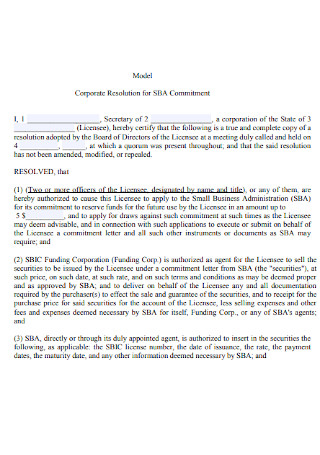
Corporate Resolution for Commitment Form
download now
FREE Corporate Resolution Form s to Download
26+ Sample Corporate Resolution Forms
What Is a Corporate Resolution Form?
Examples of Corporate Resolutions
Processes Involved in the Creation of Corporate Resolutions
How to Make a Corporate Resolution Form
FAQs
What does a corporate resolution form look like?
How do you write a corporate resolution?
What is a corporate resolution template?
Do all directors need to sign a written resolution?
What does corporate resolution mean?
Who should sign a corporate resolution?
What Is a Corporate Resolution Form?
A corporate resolution form is any written document that pertains to a company’s actions that are recorded and are internally binding. These decisions are typically made by board members, company shareholders, or director-level executives and are recorded for formality.
According to an online article published by Forbes, employees want leaders that are not only capable of leading a team, but are capable of sound and reasoned decision-making. Glenn Llopis outlines a number of major reasons why corporate leaders end up making bad decisions that negatively affect an organization and its employees. He explains six behavioral patterns that are telling signs a leader may be more likely to have poor judgment and decision-making capabilities. The six patterns of behavior to look out for are: leaders that rely too much on past experience; top level executives that have a penchant for corporate politics; leaders that lack clarity of purpose; executive officers that have a record of mismanaging company resources; leaders that fail to see opportunities or lack vision; and finally, leaders who don’t trust themselves enough to lead.
Examples of Corporate Resolutions
Essentially, a corporate resolution pertains to any company decision that is acted upon by the organization’s board members, directors, or executive officers. These resolutions can encompass a broad range of topics from inducting a new board member, amending meeting procedures, to venturing into a new area of business. The following are some examples of actions and decisions that corporate leaders are usually faced with.
Processes Involved in the Creation of Corporate Resolutions
In the corporate world, the top-down approach is the most common method of running business. There are executives and top level officers that are in charge of crafting and implementing the company’s rules and regulations that trickle down to middle management and rank and file employees. Several processes are involved in the creation of corporate resolutions. For a more efficient and convenient strategy, the following steps are normally followed in chronological order:
How to Make a Corporate Resolution Form
Creating any legal document follows a particular set of rules, and it depends on the nature of the document. A corporate resolution is no exception. It may differ slightly in form and language, but it essentially follows similar rules. To create a corporate resolution form, keep in mind the following steps:
Step 1: Follow the Format
The format would depend on the company and its rules on documentation. A corporate resolution may be as simple as a one page document, a letter, or a certificate. Again, it’s not so much the format as opposed to the content that is more important when creating a resolution. A company is free to set and adopt a standard format for all their subsequent meetings and written decisions.
Step 2: State All the Basic Information
Before proceeding to the action or decision itself, a corporate resolution must include all the basic information. This includes the name of the company, the company’s business address, the date the resolution was adopted, the location where it was signed, and the date of effectivity. Make sure to list all the names of the officers who were present at the vote. Don’t forget to include each member’s official designation. Lastly, all board members are required to affix their signatures for every corporate resolution that is implemented.
Step 3: Specify the Resolution or Action
Corporate officers decide on a multitude of things when running a business. Whether minor changes or big business decisions, resolutions can have a profound effect on a company. These changes can either be lasting or may also be improved upon in the future. Whatever steps the board decides to take, it must be detailed and clearly outlined in the corporate resolution. Any potential decision must be approved unanimously by the board. Other times, it is required to reach a quorum for a resolution to be officially adopted as company policy.
Step 4: Have the Resolution Confirmed or Certified
Corporate resolutions need to be validated by an authorized officer. In most cases, a corporate secretary is usually tasked to confirm the resolution after a board meeting is adjourned. The secretary’s name and signature is often indicated at the end of the document, along with the date it was signed.
FAQs
What does a corporate resolution form look like?
A corporate resolution form may either be simple or complex, brief or lengthy. Depending on the complexity of the decision, some resolution forms are single page or are only a couple of pages long. But what characterizes a corporate resolution, like most official documents, is the formal language used in outlining a company decision.
How do you write a corporate resolution?
Most companies follow a set of guidelines in writing a corporate resolution. The documentation of actions and decisions by the board normally involves numbering the document, providing a title to the document, and using formal language when writing the resolution.
What is a corporate resolution template?
A corporate resolution template is a standard form used by members of a corporation’s board of directors. It is used to record any major decision of a company and normally goes through a voting process in order for it to be adopted by the company.
Do all directors need to sign a written resolution?
When it comes to voting during a board meeting, all directors are entitled to vote on certain matters. For a decision to be officially adopted and executed, the board must establish a majority of the votes. There may be times when a board member is not present or is unable to cast his vote. Regardless, the same procedure applies. Majority rules is the basic practice in many boardroom meetings.
What does corporate resolution mean?
A corporate resolution means either an action or decision is taken upon by a company’s decision-making body, such as a board of directors. It is discussed then voted and agreed upon by the body. After which, the item or issue is declared resolved and its course of action determined. Corporate resolutions can cover a wide range of subjects; and can vary in degrees of urgency and importance.
Who should sign a corporate resolution?
Typically, a corporation’s board of directors is required to vote and sign a corporate resolution for it to be passed and implemented. An authorized officer, such as a Corporate Secretary, is often tasked to further certify and validate the document. The power of a corporate secretary is granted and authorized by the board members themselves.
Corporate resolutions often serve a higher purpose; and it’s not only for the sake of following procedure. Major decisions and the fate of the business fall on the board of directors. These corporate actions and decisions have the potential to profoundly affect an organization and the way it conducts its business operations. Learn how to create a corporate resolution by using any of the sample templates above as a guide!
